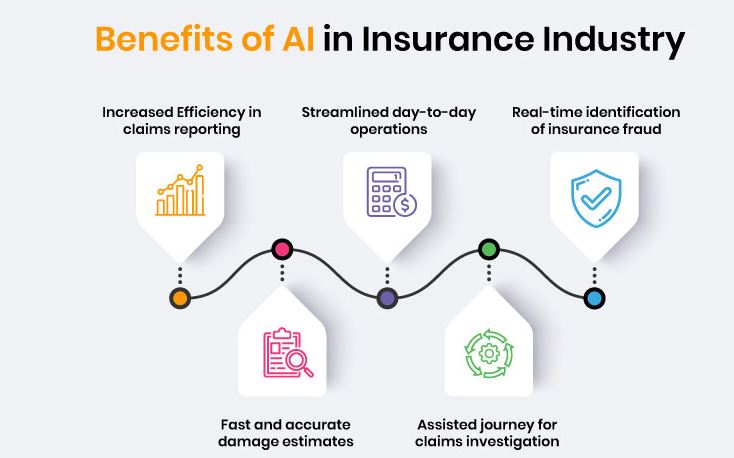Introduction:
The insurance industry has undergone a significant transformation in recent years, thanks to the rapid advancements in technology. The marriage of insurance and technology, often referred to as Insurtech, has brought about innovative solutions that are reshaping the way insurers operate and consumers interact with insurance products. In this article, we will explore the latest Insurtech advancements that are revolutionizing the insurance landscape.
1. Blockchain Technology in Insurance:
One of the groundbreaking advancements in Insurtech is the integration of blockchain technology. Blockchain ensures transparent and secure transactions, reducing the risk of fraud and streamlining the claims process. Smart contracts, powered by blockchain, enable automatic claims settlements, eliminating the need for intermediaries and expediting the entire insurance process.
2. Artificial Intelligence and Machine Learning:
Insurers are increasingly leveraging artificial intelligence (AI) and machine learning (ML) to enhance various aspects of their operations. From underwriting and risk assessment to claims processing and customer service, AI and ML algorithms analyze vast amounts of data to make accurate predictions and decisions. This not only improves efficiency but also enables insurers to offer personalized products based on individual risk profiles.
3. Telematics and IoT Integration:
The Internet of Things (IoT) has paved the way for telematics in the insurance industry. Through connected devices such as sensors and wearables, insurers can gather real-time data on policyholders’ behavior. This data is then used to assess risk more accurately, leading to personalized premium pricing. Additionally, IoT devices in vehicles enable usage-based insurance, where premiums are based on actual driving habits.
4. Big Data Analytics for Risk Assessment:
The sheer volume of data generated in today’s digital age is a goldmine for insurers. Big data analytics allows insurers to analyze vast datasets to identify patterns and trends that traditional underwriting methods may overlook. This results in more accurate risk assessments and enables insurers to set premiums that align closely with the actual risk posed by the policyholder.
5. Mobile Apps and Customer Engagement:
Insurtech has significantly improved customer engagement through the development of user-friendly mobile applications. Policyholders can now manage their policies, file claims, and communicate with insurers seamlessly through mobile apps. This not only enhances the overall customer experience but also allows insurers to provide timely updates and relevant information to their clients.
6. Cyber Insurance and Security Solutions:
With the increasing frequency and sophistication of cyber-attacks, the demand for cyber insurance has surged. Insurtech solutions in this space focus on risk prevention, detection, and mitigation. Cybersecurity measures are integrated into insurance products, providing businesses with comprehensive coverage against cyber threats. This proactive approach not only protects policyholders but also helps insurers manage and reduce their own risks.
7. Chatbots and Virtual Assistants:
The integration of chatbots and virtual assistants has streamlined customer service in the insurance industry. These AI-powered tools can handle routine inquiries, process claims, and provide policy information. By automating these tasks, insurers can allocate resources more efficiently, allowing human agents to focus on more complex and sensitive customer interactions.
8. Predictive Analytics for Fraud Detection:
Insurtech utilizes predictive analytics to identify potential fraudulent activities. By analyzing data patterns and anomalies, insurers can detect suspicious behavior and take preventive measures. This not only protects the insurance company from financial losses but also helps maintain the integrity of the entire insurance ecosystem.
Conclusion:
The Insurtech landscape is evolving at a rapid pace, and these advancements are not only benefiting insurers but also transforming the way consumers perceive and interact with insurance products. From blockchain and AI to telematics and predictive analytics, technology is playing a pivotal role in making insurance more efficient, personalized, and secure. As we move forward, it’s clear that the synergy between insurance and technology will continue to drive innovation, shaping the future of the insurance industry.
